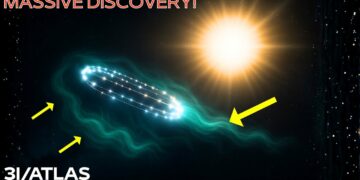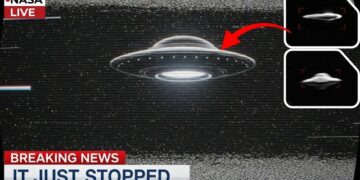The James Webb Space Telescope (JWST) has transformed our understanding of the cosmos, unveiling a universe far more vast, complex, and dynamic than previously imagined. Launched as the scientific successor to the Hubble Space Telescope, JWST’s advanced technologies and infrared capabilities allow it to peer deeper into space and time, revealing hidden structures and phenomena from the universe’s earliest epochs. Its first major data sets not only confirmed astronomers’ hypotheses but also expanded our comprehension of cosmic scale, evolution, and complexity, reshaping theories about space, time, and the formation of galaxies.
JWST’s infrared sensitivity enables it to see through cosmic dust and gas, uncovering intricate details of the early universe. Its high-resolution images have revealed densely packed galaxy clusters, stellar nurseries, and ancient light that traveled billions of years. Among its most striking discoveries are galaxies that formed just a few hundred million years after the Big Bang, challenging existing models of how quickly matter could coalesce into organized structures. These early galaxies displayed well-defined spiral arms, galactic bulges, and even dust—features thought to take far longer to develop. The presence of supermassive black holes in these young galaxies further complicates conventional timelines, suggesting rapid mass accumulation mechanisms yet to be fully understood.
The telescope’s observations also highlight the universe’s immense scale. Regions once thought empty are now known to teem with galaxies, stars, and evolving matter. JWST’s mirror, over six times larger than Hubble’s, captures light from over 13 billion years ago, offering a glimpse into the universe’s infancy. Each point of light often represents an entire galaxy, containing billions of stars and potentially countless planetary systems. The telescope has revealed galaxies with unusual shapes—some distorted by gravitational interactions, others compact or forming in bizarre configurations—mapping a cosmic web of gas and dust filaments that connect galaxies across vast distances.
Within our galaxy, JWST has penetrated dense molecular clouds to study the earliest stages of star and planet formation, capturing protostars, material outflows, and shock waves in regions like the Carina Nebula. These observations provide unprecedented detail on stellar evolution and the life cycles of stars. Beyond our galaxy, JWST’s spectroscopic analyses of exoplanet atmospheres have detected molecules like water vapor, carbon dioxide, and methane, offering clues about habitability and narrowing the search for life-supporting worlds. Its ability to observe gravitational lensing has amplified light from distant galaxies, aiding studies of dark matter and early cosmic structures.
JWST’s discoveries also extend to interstellar chemistry, identifying complex organic molecules in star-forming regions and on icy comets and asteroids. These findings suggest that the building blocks of life may be common across the universe. The telescope’s images depict a dynamic cosmos—galaxies colliding, stars forming and dying, and gas clouds shaped by gravitational forces—illustrating a universe in constant motion.
Deployed nearly a million miles from Earth at the second Lagrange Point (L2), JWST’s engineering feats, including its tennis court-sized sunshield and nanometer-precise mirror alignment, enable its unparalleled precision. By seeing through dust that obscured Hubble’s view, JWST has turned cosmic dust into a source of insight, revealing its role in star formation and galactic evolution.
As JWST continues its mission, its long-duration observations have enabled time-domain astronomy, tracking changes in distant stars and galaxies. It has revealed starburst galaxies, galactic mergers, and peculiar objects like ultra-diffuse galaxies and those potentially lacking dark matter, challenging assumptions about gravitational structures. The telescope’s study of the intergalactic medium and molecular clouds has illuminated the cosmic web and the chemistry of star-forming regions, detecting prebiotic molecules across vast distances.
JWST’s contributions extend to planetary science, capturing detailed atmospheric data from exoplanets and revealing dynamic planetary systems. It has also deepened our understanding of local phenomena, from Jupiter’s auroras to the Kuiper Belt’s primordial objects. By studying cosmic reionization and refining measurements of galaxy distributions, JWST provides insights into dark energy and the universe’s expansion.
Ultimately, JWST is more than an observatory; it is a lens into cosmic evolution. Its revelations—early galaxies, complex molecules, and dynamic processes—have redefined the universe’s scale, diversity, and interconnectedness. Each observation rewrites the cosmic story, showing a universe not just vast but vibrant, layered with nuance, and governed by principles that continue to challenge our understanding. As JWST’s mission progresses, it continues to ignite new questions, paving the way for future exploration and deepening our place in the cosmic tapestry.























